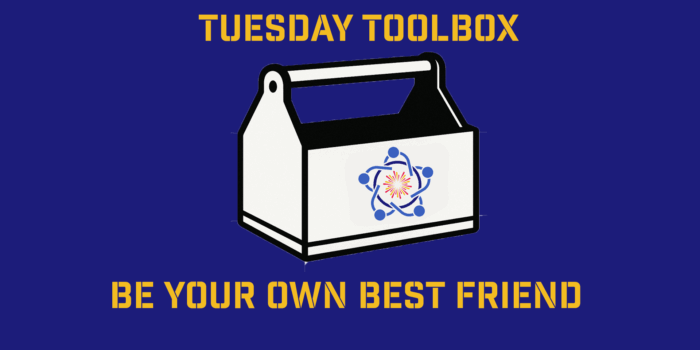My Wednesday Wish for You: To Be Your Own Best Friend We often push ourselves harder than anyone else ever…
Are any of these fears spreading you too thin to be effective?
We are collaborating too much.
That’s what Rob Cross has realized after studying high (and low) performers at effective organizations for more than 20 years. “We’re too eager to jump into, or be dragged into, active collaborations that might run better without us and that burn up our valuable time and energy,” he writes in his new book Beyond Collaboration Overload. And collaboration overload isn’t just about the meetings that fill up our calendars — it’s also the endless emails, Slacks, reports and work that every new project generates.
To reduce the overload, one essential step to take is to recognize the desires, needs, feelings and expectations that lead us to taking on too much. Here, Cross looks at the most common and how we can counter them.
My research shows we create roughly 50 percent of the collaboration overload problem in the form of the beliefs we hold. By “beliefs,” I mean the deeply held — and often unexamined — desires, needs, feelings, expectations and fears centered on how we assume we need to show up for others each day. Other terms I use are “motivators” and “triggers,” because these feelings motivate or trigger a tendency to jump into collaborations or help others, when doing so is often not in our best interests or most beneficial to our organization.
The actual list of beliefs, motivators and triggers that put people into collaboration overload is nearly infinite, but here are nine of the most common. You’re certain to have experienced some of these, and my hope is that you can apply the solutions the interviewees provided.
If you jump in too quickly or too often, you can become a target for ever-expanding requests that bog you down and prevent you from meeting your bigger goals.
Trigger #1: The desire to help others
People find this trigger surprising because helping others is a core tenet of one of the most well-established approaches to management. But what’s supposed to be a positive can actually turn into a negative. Scott, one leader I met, was always trying to help people, from his direct reports to his bosses. Yet his contributions to discussions and decisions just made additional work for himself and others.
What you can do: If you jump in too quickly or too often, you can become a target for ever-expanding requests that bog you down and prevent you from meeting your bigger goals. Develop an awareness of why people beat a path to your door. Is it because you represent the route of least resistance? If so, learn to be comfortable saying no. Remember: It helps others become self-reliant. Shift your perspective from deriving satisfaction from helping to teaching people how to solve their problems.
Trigger #2: The sense of fulfillment from accomplishment
Yes, small wins feel good, and they reinforce who we are and provide a shot of dopamine. But these two motivators — the desire to help and the satisfaction from accomplishment — set up expectations in ourselves and others that can get out of control. When we continually intervene, we expect those we’re helping to respond, which adds to their workload. They, in turn, come to rely excessively on our help, which adds to our workload and keeps us from focusing our energy on the challenging work where we add the greatest and most distinctive value. This becomes an endless cycle of escalating collaboration.
What you can do: Practice avoiding activities that give you the rush of accomplishment for accomplishment’s sake by extracting yourself or giving partial direction while building others’ capabilities. If you must engage in a small task, remind yourself that good enough really is good enough.
The most efficient collaborators don’t try to get their sense of purpose and worth from demonstrating their accomplishments or status. Instead, they get it from developing others.
Trigger #3: The desire to be influential or recognized for expertise
In a quest for status, many of us assume our role is to constantly jump into discussions and offer our expertise. Others come to expect this, so they slow down to wait for our intervention. We end up driving work back to ourselves as requests pile up.
But I’ve found that the most efficient collaborators don’t try to get their sense of purpose and worth from demonstrating their accomplishments or trying to gain status. Instead, they get it from developing others and positioning them to become valued for their own capabilities.
What you can do: Don’t look for status in the expertise and knowledge that defined you yesterday. Let go of those old, familiar ways of interacting so you can create the space to develop in new ways as a leader who enables the team to take ownership and engage independently.
Trigger #4: Concern about being labeled a poor performer or colleague
Driven by this trigger, we say yes early and often, so everyone knows how competent and responsive we are. When we get requests from bosses or others, most of us don’t want to hesitate or be seen as complaining.
What you can do: You may be concerned that saying no could impact you later, but there’s a limit to what you can handle.
So instead of “yes” or “no”, offer choices, such as “What order would you like me to get these done in?” Create transparency into your capability and capacity and the volume of demands you are facing. Then ask the person to discuss their true needs and see if there is a different way to accomplish the request.
The need to be right has a way of generating excess meetings and emails that consume many people’s time.
Trigger #5: The need to be right
The need to be on top of all of the details leads to a number of unproductive activities. It pushes us to spend hours preparing for meetings and digging into reports and figures or writing perfect, bulletproof emails.
Not only is this often unnecessary, it also blocks others’ engagement and doesn’t allow space for others’ input. The need to be right also has a way of generating excess meetings and emails that consume many people’s time.
What you can do: Admit that you don’t know the exact answer but you’re able and willing to quickly find out. Establish this early on, at the beginning of a project or when you join a new group.
By being authentic about your limits and having the courage to ask questions, you not only reduce your unproductive activities, but also create space for others to be honest and admit they don’t have the answers either. All this increases others’ trust in you.
Trigger #6: Fear of losing control of a project
This trigger is often tied into people’s belief that they are the most capable of doing the work well. And if you’re reluctant to delegate or connect, you sentence yourself to a life of trying to do everything yourself, which is impossible.
Moreover, control-oriented people never seem to have enough information, a clear-enough process or a perfect-enough plan. They ask for more data, build more-thorough processes or craft a better strategy, and their demands consume others’ time and they create churn and gridlock.
What you can do: Draw a line between high-risk tasks that do require you to hold on to the work and the lower-risk work that you can delegate without concern. Letting go will help you build capability in others and free up your own time to engage in work where you add the greatest value. Celebrate others’ solutions and resist the temptation to point out how you would have done it differently.
The most efficient collaborators have an expansive tolerance for ambiguity. Rather than focusing on being right, they focus on moving in the right general direction.
Trigger #7: Need for closure
This need can keep you on the phone or the computer late at night tying up loose ends in your email or trying to get that last little task accomplished when you no longer have the creativity or energy for it. Often these closure-driven efforts come out half-cooked, forcing others into additional work.
What you can do: Remind yourself that closure — or an empty email inbox — should not be your sole priority. Let nonpriority work or requests wait or slide off your radar altogether.
Do you attend every meeting on your calendar? The reality is, They’re not equally important. Skip those where your input isn’t needed and see if people notice.
Trigger #8: Discomfort with ambiguity
This trigger often comes up in the course of a project when there are unexpected developments. The ambiguity-averse argue that uncertainty can create chaos; it’s better to do the research and have the discussions well ahead of time so all the details are pinned down.
But pinning things down can lead to significant overload, not only for the manager but for the employees who run around looking for hard facts in the fog of uncertainty and much of this effort ultimately goes to waste. The future rarely unfolds the way we think it will, and the result is disengagement of the people who have wasted their time.
What you can do: The most efficient collaborators have an expansive tolerance for ambiguity. They focus on being directionally correct, making sure they are moving in the right general direction on the project. They remain open to adapting their ideas and plans as new information comes in.
Push yourself to make a decision in the face of ambiguity. Look to produce a solution in 20 minutes that helps move a plan ahead, rather than spending three hours and consuming others’ time to get to a more accurate solution or employ a more thorough process.
Trigger #9: FOMO (Fear of missing out)
The fear of missing out on better projects, better colleagues and better opportunities can become a persistent, nagging problem that won’t let you rest or stay in the moment. You feel vulnerable if you miss an opportunity to learn a new skill, or you may wonder: “Am I falling behind my peers?”
Too often, FOMO drives unproductive choices. So, we end up in projects that overburden us with collaboration and that aren’t well aligned with who we want to be or what we want to do with our lives.
What you can do: Before jumping into a new project, make sure that your plans aren’t driven by an emotional, knee-jerk reaction based on fear or social comparison. Bring people with a broader scope of responsibilities into your network. Tap these people to develop a counternarrative that might help you avoid making a decision based on FOMO rather than doing what is truly best for you.
Reprinted by permission of Harvard Business Review Press. Adapted from the new book Beyond Collaboration Overload: How to Work Smarter, Get Ahead, and Restore Your Well-Being by Rob Cross. Copyright 2021 Harvard Business School Publishing Corporation. All rights reserved.



